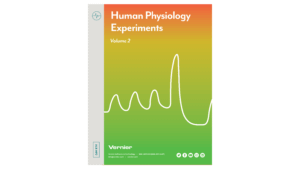Introduction
Muscle tissues maintain electrical imbalances, or potentials, across cell membranes by concentrating positive or negative charges on opposite sides of those membranes. These potentials are a form of stored energy. With activation (such as from a nerve impulse), the ions are allowed to cross the muscle cell membranes, generating electrical activity and resulting in muscle contraction.
An electromyogram, or EMG, is a graphical recording of electrical activity within muscles. It is useful in the diagnosis of disorders affecting muscles and the nerves that supply them. Inherited and acquired disorders of muscles (such as the muscular dystrophies), as well as disorders of the central and peripheral nervous systems (such as Huntington’s disease and diabetic neuropathy), result in abnormal EMG readings.

Figure 1
EMG studies are also useful for investigating normal muscle function. In this experiment, you will analyze electrical activity in the extensor muscles of the forearm. These muscles originate in tendons of the proximal dorsal forearm in the region of the lateral epicondyle and attach distally to tendons which control extension of the hand and fingers (see Figure 1). Inflammation of the tendons at the elbow is common and can result from repetitive motions used in sports, hobbies, and in the workplace. This condition, lateral epicondylitis, is commonly known as tennis elbow, but can result from any activity in which repetitive gripping occurs, especially between the thumb and first two fingers. This experiment will examine the differences in muscle activity in the forearm extensors when hand position is changed.
Important: The equipment used in this experiment is for educational purposes only and should not be used to diagnose medical conditions.
Objectives
- Obtain graphical representation of the electrical activity of a muscle.
- Associate muscle activity with movement of joints.
- Correlate muscle activity with injury.
Sensors and Equipment
This experiment features the following sensors and equipment. Additional equipment may be required.
Correlations
Teaching to an educational standard? This experiment supports the standards below.
- International Baccalaureate (IB)/Sports, Exercise, and Health Science
- 4.2 Joint and movement type
Ready to Experiment?
Ask an Expert
Get answers to your questions about how to teach this experiment with our support team.
- Call toll-free: 888-837-6437
- Chat with Us
- Email support@vernier.com
Purchase the Lab Book
This experiment is #15 of Human Physiology Experiments: Volume 2. The experiment in the book includes student instructions as well as instructor information for set up, helpful hints, and sample graphs and data.


